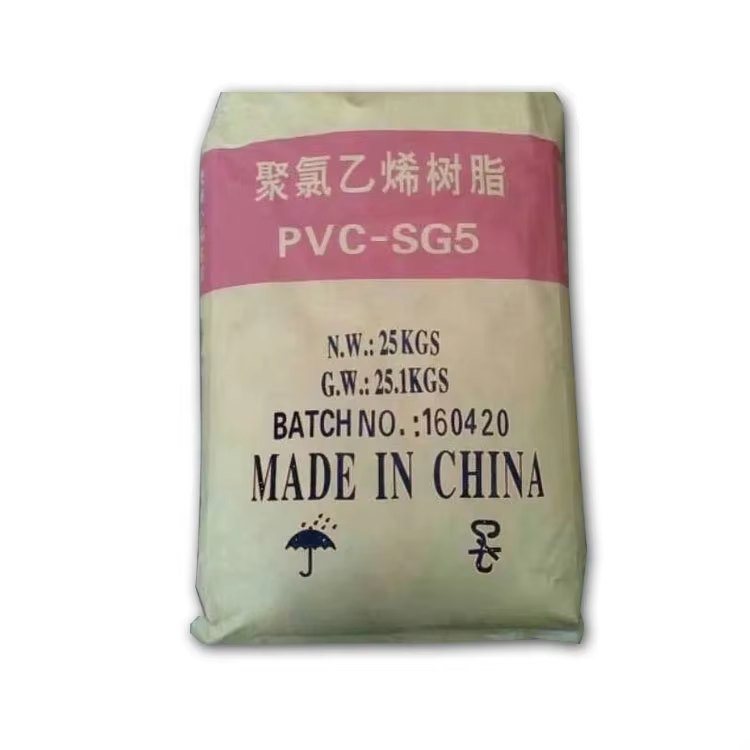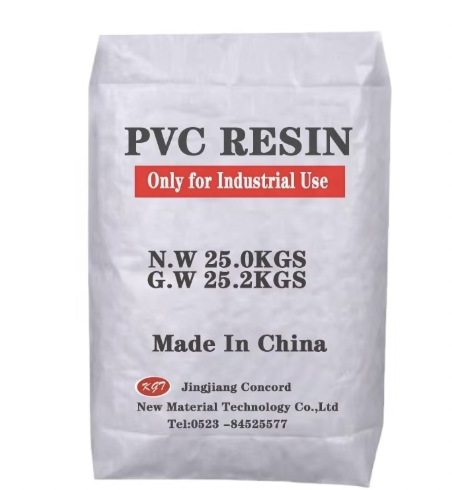Understanding the Fundamentals of Polyvinyl Chloride Production
PVC resin stands as one of the most versatile and widely used synthetic materials in modern manufacturing. As a fundamental building block of countless products, from construction materials to medical devices, PVC resin has revolutionized multiple industries with its remarkable properties and cost-effectiveness. This comprehensive guide explores the nature of PVC resin and delves into its sophisticated manufacturing processes.
The Chemical Composition and Properties of PVC Resin
Molecular Structure and Basic Components
At its core, PVC resin is a synthetic polymer composed of repeating vinyl chloride monomer units. The molecular structure consists of a carbon backbone with alternating chlorine atoms, giving PVC resin its distinctive properties. This unique chemical arrangement results in a material that combines durability with processing versatility, making it indispensable in modern manufacturing.
The base composition of PVC resin includes ethylene (derived from petroleum) and chlorine (extracted from common salt). These raw materials undergo a series of chemical reactions to form vinyl chloride monomer (VCM), which then polymerizes to create PVC resin. The resulting material exhibits excellent chemical resistance, weather durability, and flame-retardant properties.
Physical Characteristics and Material Benefits
PVC resin demonstrates remarkable physical properties that contribute to its widespread adoption. In its pure form, it appears as a white, free-flowing powder that can be melted and formed into various shapes. The material exhibits high tensile strength, resistance to chemical corrosion, and exceptional electrical insulation properties.
The versatility of PVC resin extends to its ability to accept various additives and modifiers. These additions can enhance specific properties such as impact resistance, UV stability, or flexibility, allowing manufacturers to tailor the material to specific applications. This adaptability has made PVC resin a preferred choice across diverse industries.
The Manufacturing Process Explained
Raw Material Preparation and Initial Steps
The manufacturing of PVC resin begins with the careful preparation of raw materials. Ethylene dichloride (EDC) is produced through the chlorination of ethylene, which then undergoes thermal cracking to create vinyl chloride monomer. This process requires precise control of temperature and pressure conditions to ensure optimal conversion rates and product quality.
Quality control measures are implemented at every stage, with sophisticated monitoring systems tracking chemical compositions and reaction parameters. The purification of raw materials is crucial, as impurities can significantly impact the final product's properties and performance characteristics.
Polymerization Technologies and Methods
The heart of PVC resin production lies in the polymerization process. Manufacturers typically employ one of three main methods: suspension, emulsion, or bulk polymerization. Suspension polymerization, the most common technique, involves dispersing vinyl chloride monomer in water droplets with the aid of suspending agents and initiators.
During polymerization, careful control of reaction conditions including temperature, pressure, and agitation speed is essential. These parameters directly influence the PVC resin's molecular weight, particle size distribution, and porosity - characteristics that determine its processing behavior and end-use properties.
Quality Control and Processing Standards
Testing and Certification Procedures
Rigorous quality control measures ensure that PVC resin meets industry specifications and regulatory requirements. Manufacturers conduct extensive testing on physical properties such as particle size distribution, bulk density, and porosity. Chemical analysis verifies the absence of residual VCM and other impurities that could affect product performance.
Modern testing facilities employ advanced analytical instruments and standardized procedures to maintain consistent quality. Regular calibration of equipment and validation of test methods ensure accurate and reliable results, supporting the production of high-quality PVC resin.
Environmental and Safety Considerations
The manufacturing of PVC resin involves strict adherence to environmental and safety protocols. State-of-the-art emission control systems minimize environmental impact, while closed-loop processing reduces waste and conserves resources. Workers undergo comprehensive safety training and utilize appropriate personal protective equipment during all phases of production.
Sustainable manufacturing practices continue to evolve, with innovations in recycling technology and eco-friendly additives reducing the environmental footprint of PVC resin production. Industry leaders invest in research and development to improve process efficiency and minimize environmental impact.
Applications and Industry Uses
Construction and Building Materials
The construction industry represents one of the largest consumers of PVC resin, utilizing the material in pipes, window frames, flooring, and siding. The material's durability, weather resistance, and low maintenance requirements make it ideal for long-term building applications. Modern architectural designs increasingly incorporate PVC-based materials for their aesthetic versatility and performance benefits.
Building codes and standards worldwide recognize PVC products for their reliability and safety characteristics. The material's fire-resistant properties and structural stability contribute to its widespread adoption in commercial and residential construction projects.

Medical and Consumer Products
In the medical field, PVC resin serves as the foundation for essential healthcare products including blood bags, tubing, and medical packaging. The material's biocompatibility and sterilization capabilities make it invaluable in medical applications. Consumer goods manufacturers utilize PVC resin in packaging, toys, and household items, benefiting from its cost-effectiveness and versatility.
Ongoing research continues to expand the potential applications of PVC resin, with new formulations enabling innovative products and improved performance characteristics. The material's adaptability to various processing methods supports continuous innovation across industries.
Future Trends and Innovations
Technological Advancements
The PVC resin industry continues to evolve with technological innovations in production processes and material formulations. Advanced automation systems and digital controls enhance manufacturing efficiency and product consistency. Research into new catalyst systems and polymerization techniques promises to further improve product quality and reduce production costs.
Emerging technologies in polymer science offer opportunities for developing enhanced grades of PVC resin with superior properties. These developments could expand the material's applications and market potential in coming years.
Sustainability Initiatives
Environmental consciousness drives innovation in sustainable PVC resin production. Industry leaders invest in circular economy initiatives, developing improved recycling technologies and bio-based alternatives. The focus on sustainability extends to energy-efficient manufacturing processes and the development of eco-friendly additives.
Market demands for environmentally responsible materials encourage continued advancement in green chemistry approaches to PVC resin production. These efforts align with global sustainability goals while maintaining the material's essential role in modern manufacturing.
Frequently Asked Questions
What makes PVC resin different from other plastic materials?
PVC resin distinguishes itself through its unique combination of chlorine and ethylene-based components, resulting in superior flame resistance, chemical stability, and cost-effectiveness compared to other plastics. Its versatility in accepting various additives allows for customization of properties to meet specific application requirements.
How long does PVC resin typically last in various applications?
The lifespan of PVC resin products varies depending on the application and environmental conditions. In construction applications, PVC materials can last over 50 years with minimal maintenance. Medical-grade PVC products maintain their integrity through sterilization processes, while consumer goods demonstrate excellent durability under normal use conditions.
What are the environmental considerations in PVC resin production?
Modern PVC resin production incorporates various environmental safeguards, including closed-loop manufacturing systems, advanced emission controls, and energy-efficient processes. The industry continues to advance recycling capabilities and develop sustainable additives, working toward reduced environmental impact throughout the material's lifecycle.

